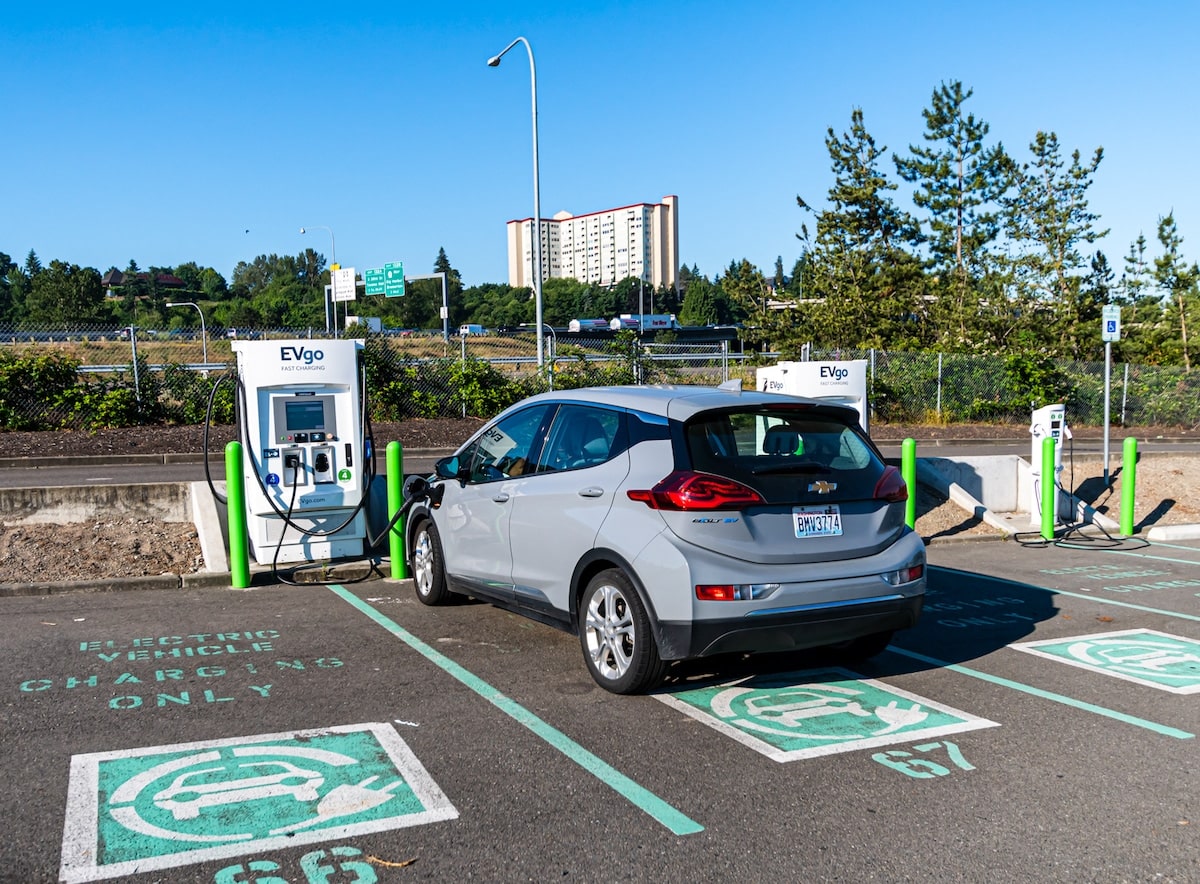Introduction
As electric vehicles (EVs) continue to gain popularity, so too does the need for charging infrastructure that is fast, efficient, and widely available. Among the different types of EV charging, AC Fast Charging has emerged as a promising solution that balances charging speed and infrastructure costs. This blog will explore the technology behind AC Fast Charging, its benefits and advantages, components, cost, potential applications, etc.
Electric Vehicle (EV) adoption depends on several factors, including cost, range, and charging speed. Of these, charging speed is crucial because it affects the convenience and accessibility of EVs. If charging time is too slow, drivers will be discouraged from using EVs for long trips or daily commutes. However, as charging technology improves, the charging speed has become faster, making EVs more viable for everyday use. As more high-speed charging stations are built and the charging times continue to decrease, EV adoption will likely increase significantly.
What Is AC Fast Charging?
AC fast charging is a type of electric vehicle charging that utilizes AC (alternating current) power to charge an electric vehicle’s battery rapidly. This type of charging requires a specialized charging station or wall box to deliver high power levels to the vehicle’s onboard charger. AC fast charging is faster than standard AC charging but slower than DC fast charging, which uses direct current to charge the vehicle’s battery.The charging speed of AC Fast Charging ranges from 7 to 22 kW, depending on the charging station’s capacity and the vehicle’s onboard charger.
AC Fast Charging Technical Overview
Introduction of AC Charging Technology
With this technology, EV owners can now charge their vehicles at lightning-fast speeds, allowing them to travel long distances without needing extended recharge stops. AC fast charging uses a higher voltage and amperage than conventional charging methods, enabling EVs to charge up to 80% of their battery capacity in as little as 30 minutes. This technology has the potential to revolutionize the way we think about electric transportation, making it a more viable and practical option for everyday use.
AC VS. DC charging
There are two main types of EV charging: AC charging and DC (direct current) charging. DC charging can deliver power directly to the vehicle’s battery, bypassing the onboard charger and charging at speeds of up to 350 kW. However, DC charging infrastructure is more costly and complex to install and maintain. While AC charging is slower than DC charging, it is more widely available and less expensive to install.
How AC Charging Works & What Makes It Faster Than Regular AC Charger
AC charging is the process of recharging an electric vehicle’s (EV) battery using alternating current (AC) power. AC charging can be done using a regular or faster AC charger. The regular AC charger uses a Level 1 charging system, which typically delivers 120 volts and up to 16 amps of power, resulting in a charging speed of around 4-5 miles of range per hour.
On the other hand, the faster AC charger uses a Level 2 charging system, which delivers 240 volts and up to 80 amps of power, resulting in a charging speed of up to 25 miles of range per hour. This increased charging speed is due to the higher voltage and amperage delivered by the Level 2 charging system, allowing more power to flow into the EV’s battery in a shorter amount of time. Further to this, Level 2 charging systems often have features like WiFi connectivity and smartphone apps to monitor and control the charging process.
The Benefits And Advantages Of AC Fast Charging
AC fast charging has several benefits and advantages that make it an attractive solution for EV owners and charging station operators.The most significant benefit of AC fast charging is the reduced charging time. A typical EV battery can be charged from 0 to 80% in around 30-45 minutes with an AC fast charger, compared to several hours with a regular AC charger.
Another advantage of AC fast charging is its lower infrastructure costs than DC fast charging. DC fast charging requires more complex and expensive equipment, making it more costly. Alternatively, AC fast charging can be implemented with simpler infrastructure, reducing the overall installation cost.
The simplicity of AC fast charging infrastructure also provides greater flexibility regarding installation locations. AC fast charging stations can be installed on a broader range of locations, such as parking lots, shopping centers, and public areas, making it more accessible for EV owners to charge their vehicles.
The Efficiency And Effectiveness Of AC Fast Charging For EVs
In conjunction with its benefits, AC fast charging is also an efficient and effective solution for charging EVs. The higher power levels of AC fast charging allow more energy to be delivered to the battery in a shorter amount of time, reducing the time needed for a full charge.
Moreover, AC fast charging is more efficient than regular AC charging, as it delivers energy to the battery faster. This means less energy is lost as heat during the charging process, resulting in less energy waste and lower charging costs for the EV owner.
AC Fast Charging Accessories And Components
AC fast charging stations have several components and accessories that work together to provide a fast and efficient charging solution for EVs.
Introduction Of AC Fast Charging Components
The main components of an AC fast charging station include a power module, a communication module, a charging cable, and a user interface. The power module converts the AC power source into DC power and delivers it to the EV battery. The communication module manages the charging process, communicates with the EV, and ensures the safety of the charging process. The charging cable connects the charging station to the EV, and the user interface provides information to the EV owner and enables them to start and stop the charging process.
How These Accessories Work Together
When an EV owner plugs their vehicle into an AC fast charging station, the charging station communicates with the EV to determine the optimal charging parameters for that particular vehicle. Once these parameters have been established, the charging station delivers power to the EV’s battery using a high-power AC cable.
The charging station also monitors the battery’s state as it charges, adjusting the charging parameters as necessary to ensure that the battery is charging at the optimal rate. Once the battery has reached its full charge, the charging station stops providing power to the vehicle, ensuring that the battery is not overcharged and that its overall lifespan is not reduced.
The Cost Of AC Fast Charging
The cost of AC fast charging can vary depending on several factors, including the charging station’s power output, the type of connector used, and the location of the charging station. In general, the cost of AC fast charging is higher than that of standard AC charging, but it is still significantly cheaper than gasoline.
The cost of AC fast charging is typically calculated based on the amount of energy consumed by the EV. This is measured in kilowatt-hours (kWh). The cost of electricity varies depending on the location, but it is typically around $0.10 to $0.20 per kWh. Therefore, charging an EV with a 60 kWh battery from empty to full would cost around $6 to $12.
In addition to the cost of electricity, some charging stations may charge a fee for using their facilities. These fees can vary significantly depending on the location and the type of charging station. Some stations offer free charging, while others charge a flat fee or a per-minute rate.
AC Fast Charging And Battery Health
Another concern many EV owners have about fast charging is the potential impact on battery health. While it is true that fast charging can cause more wear and tear on the battery than slower charging, the impact is generally minimal.
Many EV manufacturers have designed their vehicles to be compatible with fast charging and have implemented some different technologies to help mitigate the impact on battery health. For example, some EVs use liquid cooling systems to help regulate the battery’s temperature during fast charging, reducing the likelihood of damage.
The Applications Of EV Fast Charging
AC fast charging has several different applications, ranging from personal use to public infrastructure. For personal use, AC fast charging allows EV owners to quickly recharge their vehicles while on the go, making it easier for them to travel longer distances without worrying about running out of power.
For public infrastructure, AC fast charging can help support the growth of the EV market by providing reliable and convenient charging options for EV owners. This infrastructure can be deployed in many different locations, such as parking lots, rest stops, and other public areas.
Challenges And Future Of AC Fast Charging
One of the biggest challenges is the infrastructure required to support AC fast charging. Unlike traditional charging stations, AC fast charging requires a much larger electrical capacity, so upgrading the power grid and installing high-capacity transformers and other equipment can be expensive and time-consuming. Additionally, AC fast charging can significantly strain the battery and the charging system of the vehicle, potentially reducing its lifespan and increasing the risk of overheating and other safety issues. It is essential to develop new technologies and standards that ensure the safety and reliability of AC fast charging while also making it more accessible and affordable for everyone.
The future of AC fast charging looks promising as electric vehicles become more popular and widespread. Meanwhile,many professional EV charging station manufacturers are on the market(e.g., Mida), so it is pretty easy to get the best AC fast charging station. Furthermore, advancements in battery technology could lead to longer-lasting batteries and faster charging times. So the future of AC fast charging is bright and will play a crucial role in the widespread adoption of electric vehicles.
Summary
In conclusion, AC fast charging is an essential technology for the growth of the EV market. However, as the number of EVs continues to increase, some problems still need to be addressed as soon as possible. By implementing robust measures, we can also guarantee that fast AC charging will continue to be a dependable and eco-friendly method of fueling tomorrow’s electric vehicles.
Post time: Nov-09-2023

 Portable EV Charger
Portable EV Charger Home EV Wallbox
Home EV Wallbox DC Charger Station
DC Charger Station EV Charging Module
EV Charging Module NACS&CCS1&CCS2
NACS&CCS1&CCS2 EV Accessories
EV Accessories

